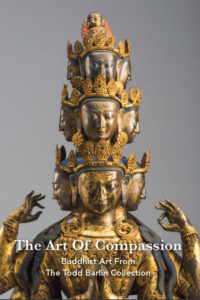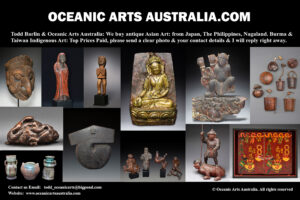Two Superb Mongolian Drawings of a Witch & Scorpion 19th Century
| Collection No. | SOLD PLEASE SEE OTHER ARTWORKS |
|---|---|
| Size | 17cm x 9cm each |
SOLD PLEASE SEE OTHER ARTWORKS
These two superb Mongolian Yantra drawings depict a Witch and a Scorpion both with Tibetan characters written near the images. Drawn on an old handmade paper. Dating from the 19th Century to the early 20th Century.
Yantra diagrams are ritual objects belonging to the classification of Charts. They are often created from carved blocks resulting in ‘block prints.’ Yantras can also be drawn by hand or painted with a brush as are these two fine painted examples. Yantras serve different ritual purposes that generally involve accompanying rituals to attract good fortune or to avert obstacles and misfortune.
The Scorpion Yantra is generally associated with the practices of Guru Dragpo, a wrathful form of Padmasambhava. A number of other fierce Nyingma deities have the scorpion as a servant or messenger figure.
According to the Tibetan Art Scholar David Templeman writing in my exhibition catalogue: The Art of Compassion: Buddhist Art in The Todd Barlin Collection 2018
Buddhist teaching is not something learned from books, although they certainly play a part in reinforcing what one has already learned. The prime way of learning in Tibeto-Mongol Buddhism is through one’s master’s words. A common sentiment in those lands is that, without a fully qualified master to transmit them, the Buddha’s teachings may well never have existed. In learning the many complex rituals involving sometimes hundreds of deity forms, their names, iconography, secret syllables, and so on, a student must have a teacher who almost always transmits this information orally. As an aid to memory, especially where complex deities are to be learned, small cards representing these myriad forms are shown by the master to the teacher, and the details, often found on the back of each card, are read aloud by the teacher with the intention that the student retains the details in their memory. These small cards are called tsakli or tsakali. When a deity form has been fixed in the mind and one has embarked on the path of Buddhist tantra, at a certain stage one is expected to select a tutelary deity; that is, a deity that is core to one’s heart practice. This deity then becomes the focus of one being, and it is not unusual for both monks and laypeople to spend a great deal of money commissioning a large painting of such deities. These scroll paintings are known as thangkas ”
Provenance: The Todd Barlin Collection of Tibetan and Mongolian Buddhist Art & Asian Art
Exhibited and Published: The Art of Compassion: Buddhist Art from The Todd Barlin Collection. Sydney Australia 2018. Catalogue written By David Templeman, Page 95
To see many more rare items and the finest masterpieces, please make an appointment with us to visit the gallery.
For all inquiries, please contact us.







